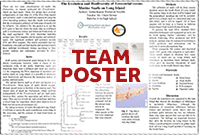
Team Info
- Program:
- Urban Barcode Research Project
- Year:
- 2023-24
- Research Topic:
- Biodiversity & trade
- Taxonomic Group Studied:
- Fungi
Project:
Fungal specie biodiversity across New York City borough niches
- Students:
- Sofia Aita, Erica Chhing, Angel Ariza
- Institution:
- NYU Langone Health,
- Mentors:
- Dianny Almanzar
Abstract:
Fungi, a diverse and enigmatic group of organisms, play crucial roles in ecosystem development, yet their biodiversity is often underrepresented. Beyond their roles as decomposers, fungi are integral to nutrient cycling, pathogenesis, and mutualistic relationships. DNA barcoding aids in identifying fungal species across geographical locations, offering insight into their biodiversity and ecological functions. Samples are collected from three different public parks and then labeled with location and time of extraction. DNA is then isolated from samples to aid in specimen identification via PCR and gel electrophoresis. To ensure a diverse dataset, three distinct samples will be collected from different locations, providing a wide array of fungal specimens for analysis. Sequences obtained from DNA extraction and PCR will be compared with pre-existing genome data for further analysis. Identified fungi are then categorized, and the variation between fungal populations will be interpreted. A

